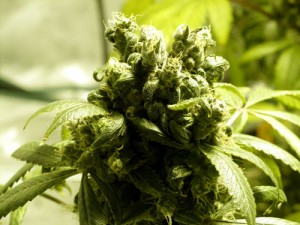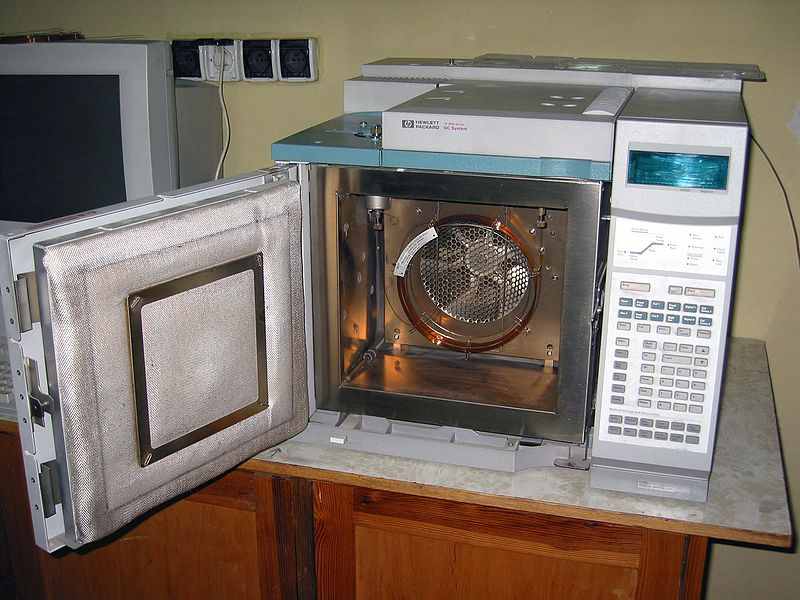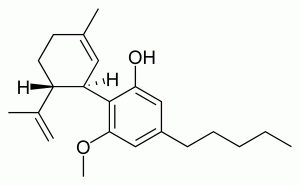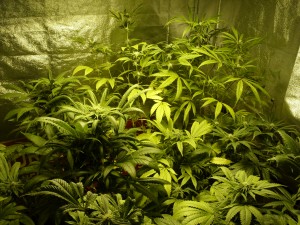Hospitals routinely screen new born babies for drugs. If a mother uses a drug, such as Cannabis then the baby may drink the plants ingredients or metabolites in breast milk, thus baby urine or feces can provide evidence of the mother’s drug use and allow the state to take control of the child. Cannabis should be an easy drug to detect, THC can stay in the body for an extended period of time, unlike cocaine or speed or alcohol. However, detecting THC in babies just got a little bit trickier.
A study published in the Journal of Clinical Biochemistry demonstrated that baby urine containing a tiny amount of baby soap would give a positive result on a drug test for THC, the active ingredient in the plant. A positive test for your baby can result in child abuse allegations and the involvement of social services. Hence, the authors suggest that laboratories, which conduct drug tests for THC should be aware of these potential sources of error that exist in the real world.
So, what do you do when your baby tests positive for marijuana? We know what the consequences of the failing the tests are…but what does the science say about pregnancy, babies, and breast milk?
The science demonstrates that cannabinoid receptor activation (i.e. CB1 and CB2 receptors) is a natural and important component for proper development. Mammals, including humans, produce endocannabinoids, which are THC-like compounds. These THC-like compounds include anandamide and 2-AG. Anandamide and 2-AG activate the same receptors as THC, and are found in bovine and human breast milk. Adding THC to the mix of endocannabinoids in breast milk may lead to changes in development but scientists just aren’t sure if any of these differences in animals translate into long term changes in human development.
The developmental effects of THC exposure remain unclear, but the blocking of cannabinoid receptor activation during early development is considered to have “catastrophic” effects. Studies by Ester Fride and colleagues have demonstrated the importance of having an endocannabinoid system that is functioning properly. For example, one of the studies by Fride et al. showed that the administration of SR141716A, a drug which prevents CB1 receptor activation, will kill 50% of baby mice within 2 days, due to a disruption of feeding behavior. In another experiment from the same study, THC was able to reverse the disruption in feeding behavior induced by SR141716A.
Additional studies in mice and rats have shown that prenatal or postnatal exposure to cannabis or cannabinoids may lead to subtle changes in breast milk and development. However, many of these animal studies do not have much, if any human data to corroborate them. Always keep in mind that drugs abuse studies are difficult to interpret, as most subjects use multiple drugs and socioeconomic status seems to play the biggest role-money, health care, and your parents level of education can have a bigger impact on healthy development than Cannabis. Interestingly, a study found that among poor mothers living in the northeast, marijuana was the least common drug used and the health of a newborn seem to be most affected by polydrug use, including: alcohol, tobacco, and cocaine.
Many studies have looked at the effect of Cannabis use during pregnancy and the results suggest that there are not clear consequences. A review article published by Dr. Ethan Russo walks the reader through the human studies on pregnancy, here are of some of the examples from his article:
- “A variety of studies have demonstrated transient effects of cannabis on endocrine hormone levels, but no consistent effects seem to occur in chronic settings (Russo et al.2002).”
- “Studies are hampered by the obvious fact that laboratory animals are not human in their responses. Estrous cycles and behaviors in animals are not always analogous to menstrual cycles and other physiological effects in women.”
- “In a study of 171 women, 25% of pregnancies ended spontaneously within 6 weeks of the last menses. Cannabis exposure seemed to have no observable effect in these cases (Wilcox, Weinberg, and Baird 1990).”
- “In 1987, the Ottawa group compared effects of cannabis, tobacco, alcohol and caffeine during gestation (Fried et al. 1987). Whereas tobacco negatively affected neonatal birth weight and head circumference, and alcohol was associated with lower birth weight and length, no effects on any growth parameters were ascribable to maternal cannabis usage.”
- “In a subsequent study (Witter and Niebyl 1990), examination of 8350 birth records revealed that 417 mothers (5%) claimed cannabis-only usage in pregnancy, but no association was noted with prematurity or congenital anomalies. The authors suggested that previously ascribed links to cannabis were likely confounded by concomitant alcohol and tobacco abuse.”
- “A group in Boston noted a decrease in birth weight of 79 g in infants born to 331 of 1226 surveyed mothers with positive using drug screen for cannabis (p =0.04) (Parker and Zuckerman 1999), but no changes in gestation, head circumference or congenital abnormalities were noted.”
- “The largest study of the issue to date evaluated 12,424 pregnancies (Linn et al.1983). Although low birth weight, shortened gestation and malformations seemed to be associated with maternal cannabis usage, when logistic regression analysis was employed to control for other demographic and exposure factors, this association fell out of statistical significance.”
- “Dreher has extensively examined prenatal cannabis usage in Jamaica (Dreher 1997; Dreher, Nugent, and Hudgins 1994), wherein the population observations were not compounded by concomitant alcohol, tobacco, or polydrug abuse. This study is unique in that regard, no less due to the heavy intake of cannabis (“ganja”), often daily, in this cohort of Rastafarian women. No differences were seen between groups of cannabis-using and non-cannabis-using mothers in the weight, length, gestational age or Apgar scores of their infants (Dreher, Nugent, and Hudgins 1994). Deleterious effects on progeny of cannabis smokers were not apparent; in fact, developmental precocity was observed in some measures in infants born to women who smoked ganja daily.”
The research on this subject doesn’t end there. Researchers have administered cannabinoids to children; cannabinoids may have a role in pediatric medicine as young children do not appear to get “high” from cannabinoids such as THC. Below Ester Fride discussed two of the clinical trials on cannabinoids and children:
“The gradual postnatal increase of anandamide and its CB1 receptors (see Video of Pre- and postnatal development of the endocannabinoid CB receptor system below) is accompanied by a gradual maturing response to the psychoactive potential of D9-tetrahydrocannabinol and anandamide in postnatal mice between birth and weaning (Fride and Mechoulam, 1996b).
This observation has important implications for cannabinoid therapy in children, since psychoactive side effects may be expected to be minor when treated with cannabinoids at a young age. Indeed, very high doses of D8-tetrahydrocannabinol (approximately 0.64 mg/kg/treatment) were given to children between the ages 3 and 13 years who were undergoing chemotherapy for the treatment of various hematologic cancers, over long periods of time (up to 114 treatments, based on 4 treatments/24h during the days of chemotherapy). The anti-emetic effects were impressive, whereas the side effects were minimal (Abrahamov and Mechoulam, 1995). In a case report study (Lorenz, 2003), eight children (ages 3–14 years) with a variety of severe neurological diseases were treated with D9-tetrahydrocannabinol (0.04–0.12 mg/kg/day). Significant improvements in behavioralparameters including reduced spasticity, improved dystonia, increased interest in the surroundings and antiepileptic activity were reported without notable adverse effects.
It is not clear, how, in the first study, the anti-emetic effects were achieved (presumably via the area postrema) and in the second, positive neurological benefit was derived in the absence of adverse psychological effects.
Is it possible that a differential CB1 receptor distribution appears during development, or that differential maturation of brain pathways is responsible for the clinical success? Clearly, further animal experiments and clinical investigations of cannabinoid treatment in the developing organism are warranted.”
The scientific evidence discussed here suggests that Cannabis may be used during pregnancy with little risk or consequence to your health or the baby’s health (One parenting website suggested that the biggest risk to a child is the parents state of mind after use).
Regarding Cannabis use, the most severe consequences to the mother and her baby appear to result from interactions with law enforcement, social services, and baby soap.
VIDEO: Pre- and Postnatal Development of the Endocannabinoid System by Ester Fride Ph.D

Jahan Marcu is currently investigating the pharmacology of cannabinoid receptors. He was working at the California Pacific Medical Center Research Institute when exciting discoveries were made showing enhanced anti-cancer effects with THC and CBD from the Cannabis plant. The findings were published in the Journal of Molecular Cancer Therapeutics. In 2009 he received the Billy Martin Award from the International Cannabinoid Research Society (ICRS). Jahan is currently the vice-chair the Medical and Scientific Advisory Board at Americans for Safe Access (ASA). Questions? Contact [email protected]
DISCLAIMER: The views and opinions expressed are those of the author and do not necessarily represent any University, business or affiliates. While the information provided in this blog is from published scientific studies it is not intended to diagnose or treat any disease.

 Chris Goldstein is a respected marijuana reform advocate. As a writer and radio broadcaster he has been covering cannabis news for over a decade. Questions?
Chris Goldstein is a respected marijuana reform advocate. As a writer and radio broadcaster he has been covering cannabis news for over a decade. Questions? 








